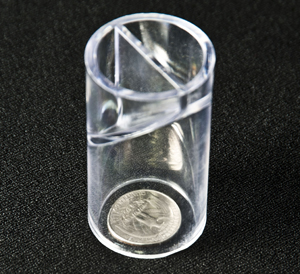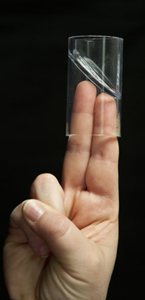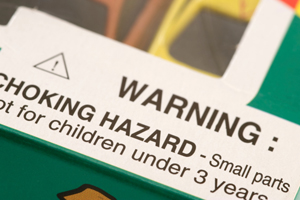OnSafety is the Official Blog Site of the U.S. Consumer Product Safety Commission. Here you'll find the latest safety information as well as important messages that will keep you and your family safe. We hope you'll visit often!
|
By CPSC Blogger on December 29, 2011
Fireplaces are a symbol of a warm and welcoming home. But using them improperly can lead to tragedies.
Tragedies involving fires pull at our heartstrings — like the Christmas morning fire that tragically killed three children and their grandparents in Stamford, Conn. (Source: Ct. Post)
According to the Connecticut Post, the family had used their fireplace that day. Stamford, Ct.’s chief fire marshal told the Ct. Post that the initial investigation determined that the fireplace ashes and embers were discarded in a bag, which started the fire.
Based on news stories, it’s currently unclear whether there were any working smoke alarms in the home.
We at CPSC are truly saddened by these deaths and others like them.
SO PLEASE MAKE A MENTAL NOTE: Before starting a fire in the fireplace, make sure ALL of your home’s smoke alarms are working.
Even hard-wired smoke alarm systems need a battery backup, by the way.
That brings us to Mental Note No. 2: Soak hot ashes in water and place them in a covered metal container outside of your home. That’s the recommendation of the U.S. Fire Administration.
Every year, more than 3,000 people die in residential fires. About two-thirds of home fire deaths happen in homes with no working smoke alarms. You can cut the risk of dying from a fire by almost half by simply having properly installed and maintained smoke alarms in your home.
When did you last check your smoke alarms? Do you test them every month? Smoke alarms save lives every year. But remember, they can only save your life if they are able to warn you!
This address for this post is: http://www.cpsc.gov/onsafety/2011/12/working-smoke-alarms-your-life-may-depend-on-them/
By CPSC Blogger on December 27, 2011
CPSC – you’re the recall agency, right? That’s how many think of us.
Here at CPSC, we’re all about keeping families safe – around the holidays and beyond. And that starts at our National Product Testing and Evaluation Center.
For a recall to happen, a product needs to be found to be unsafe by CPSC staff or its manufacturer. But exactly what does that mean? Here’s an inside view. Meet the scientists. See some of the tests. Think about these tests when you buy and use holiday gifts.
To watch this video in Adobe Flash format, you may need to download the Adobe Flash player. You can also watch the video in Windows Media format. (Watch in Windows Media format.)
And be sure to check the products in your home against those that we’ve recalled.
This address for this post is: http://www.cpsc.gov/onsafety/2011/12/tour-our-product-testing-laboratory/
By CPSC Blogger on December 20, 2011
Small parts and small children can be a deadly combination. To prevent young children from choking, children’s toys and games, as well as balloons, have warning labels. These labels help you keep small things away from your little ones.
But what are small parts? And why should parents be concerned about them?
First, this is a small parts tester:


The cylinder is 2.25 inches long by 1.25 inches wide. That’s about the size of a 3-year-old’s throat. The opening is slightly wider than a quarter or about the width of two fingers:
Note: Some parents use a toilet paper roll as a practical alternative to a small parts tester. Parents should be aware that the toilet paper roll is wider and longer than the official tester.
If a toy or a piece of a toy intended for a child younger than 3 fits fully into the cylinder, that toy is banned. This federal law has been around for decades and has helped prevent children from choking on products. Small parts can get stuck in a child’s throat and be deadly.
In 2010, 9 of the17 toy-related deaths were associated with young children swallowing balloons, small balls and parts of toys or games. From reports that provided details, we know that some of those deaths were from items that fit into the tester. High-powered magnets that we wrote about earlier this month fit in there, too, as do button batteries that power musical holiday cards, remote controls, flashlights and other products in many homes.
Toys and games intended for children ages 3 to 6 that have small parts must have a warning label. This holiday season, as you buy presents for the young children on your list, look closely for warning labels like this:

Be mindful that age labels on toys are not just based on your children’s smarts, but are also for their safety.
If a toy warns that it’s not for children younger than 3, then really, that toy is NOT safe for young children. If your younger child has older siblings around, make sure that big sister or brother’s toys and toy parts are out of reach at all times.
This address for this post is: http://www.cpsc.gov/onsafety/2011/12/small-parts-what-parents-need-to-know/
By CPSC Blogger on December 14, 2011
CLICK!
That’s the sound you often hear when you close the child-resistant cap on a medicine bottle.
Imagine this scenario: It’s the middle of the night and your sick child needs a dose of fever reducing medicine. You’re only half awake and caring for your child. You give your child the medicine and head back to bed.
CLICK. Did you hear it? Sometimes you won’t. But be sure the cap is closed tightly. Even in your most sleep-deprived hours, check the cap.
Most emergency room visits involving 2-year-olds happen after children find and eat or drink medicines when adults aren’t looking, according to the Centers for Disease Control and Prevention. And each year, the nation’s poison control centers field more than 2 million calls because of unintentional poisonings.
This is why you need to put the bottles UP and AWAY.
Like many parents, you may think child-resistant caps fully prevent children from opening medications. Wrong. Child-resistant caps simply give you more time to prevent children from getting into medicines.
The regulation that covers child-resistant packaging works. Since the Poison Prevention Packaging Act was passed in 1970, there has been a 40% decline in aspirin poisonings alone with the use of child-resistant closures. That’s hundreds of children’s lives that have been saved.
Your vigilance can prevent the poisonings that continue to happen. Click, Up and Away. [Link will go back to the CDC campaign]
Follow these steps to keep children safe around medicine:
Put the medicine up and away. Layers of protection are best. That means put it up in a cabinet or closet out of sight. Locks or child-resistant latches are recommended.
- Never call medicine “candy.”
- Ask for and use child-resistant closures on your medicines.
- Keep medicines in their original containers. Don’t transfer them to bottles, day-minders, cups or non-child-resistant containers.
- Take your medicines out of sight of young children, because young children tend to imitate adults.
Remember, young children will eat or drink almost anything. Poison prevention starts with you!
This address for this post is: http://www.cpsc.gov/onsafety/2011/12/three-words-for-poison-prevention-click-up-and-away/
By CPSC Blogger on December 3, 2011

See the ladder. See the man falling off the ladder.
This is NOT the way to start the holidays. (Obvious? Yes.) Yet, every year, hundreds of people fall from ladders while hanging decorations.
In November and December 2010, more than 13,000 people were treated in emergency rooms nationwide from injuries related to holiday decorations. That’s the largest number of injuries in 8 years.
So, while you might think that you already know how to use a ladder safely, now’s a good time to review ladder do’s and don’ts.
- Always select the correct ladder for the job. That’s one that extends at least 3 feet over the roofline or working surface.
- Always place your ladder on level and firm ground. Use leg levelers under the ladder to level uneven or soft ground. Leg levelers are devices that you can buy at a hardware or home improvement store.
- Make sure the ladder can support both your weight and the load you are putting on it by checking the ladder’s maximum load rating.
- Make sure your straight and adjustable ladders have both slip-resistant feet.
- Set up straight, single or extension ladders at about a 75–degree angle. To test if you have the correct angle, stand up straight with your toes touching the feet of the ladder as it leans away from you. Extend your arms in front of you. Your palms should touch the top of the rung that’s at shoulder level.
- Don’t use a metal ladder near power lines or electrical equipment. Stick with wood or fiberglass ladders in these situations and use extra caution. And no ladder should ever touch a live electric wire.
- Check all rung locks and spreader braces on your ladder to make sure they are set.
- Have a helper hold the bottom of the ladder.
- Keep ladders away from a door that can be opened.
- Only allow one person on a ladder at a time.
- Center your body between the rails of the ladder at all times. Leaning too far to one side while working is a no-no and can cause you to fall. If you were to have a belt on, the buckle should never be outside of the right or left rail of the ladder.
- Do not stand on the top three rungs of a straight, single or extension ladder.
- Stay off of the ladder’s top step and bucket shelf. Labels on ladders warn you not to stand on them as well. Don’t try to climb or stand on the rear section of a stepladder.
- Only use a ladder for its intended purpose. And follow the ladder’s instruction labels.
- When you’re done with the ladder, put it away immediately. Never leave a raised ladder unattended.
 This address for this post is: http://www.cpsc.gov/onsafety/2011/12/ladder-safety-101/
|
|











